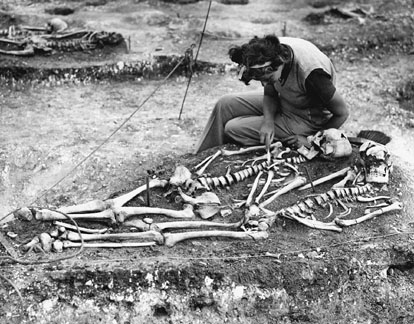

 | Page 212 |  |
(with the exception of the works of Gordon Childe and J.G.D. Clark) to fade from view.
However, change was uneven across all fields of prehistoric archaeology. For example, although a great deal of argument continued to be caused by the eolith controversy and its eventual links to the Piltdown forgery (see Spencer 1990), amateur Paleolithic archaeologists continued to scour the countryside for old sites. More-senior figures (such as Miles Burkitt) were engaged less in fieldwork than in continuing to refine tool typologies and chronologies on a global scale, but others retained a strong commitment to field study. (Among the latter group was dorothy garrod, the first female professor of archaeology in Britain, who was beginning foundational work in France at that point—work that fully prepared her for her great field research in the Near East [see Davis and Charles 1999].) During this period the primary locations for change within the study of British prehistoric archaeology were in the later periods—J. G.D. Clark’s brilliantly innovative studies of the Mesolithic, stuart piggott’s Neolithic Cultures of the British Isles (1954), and christopher hawkes’s penetrating studies of Iron Age Britain.

An archeologist cleans one of several skeletons revealed at Maiden Castle, near Dorchester, during an excavation supervised by Mortimer Wheeler.
(Hulton Deutsch Collection/Corbis)
Change and development also occurred on the technical and methodological sides of prehistoric archaeology, most notably in the work of the Fenland Research Committee (established in 1932), which conducted foundational research into the reconstruction of ancient British landscapes and environments. Excavation techniques were also developed on the basis of those inherited from Pitt Rivers and Flinders Petrie—especially by Sir mortimer wheeler at Maiden Castle and elsewhere and by Gerhard Bersu (see Evans 1989). Wheeler and Glyn Daniel were especially responsible for enhancing public understanding of the prehistoric archaeology of Britain by communicating with visitors to sites and developing television programs such as Animal, Vegetable and Mineral,
 |  |